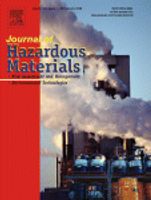WHO
Dioxins
November 29, 2023 - They are unwanted by-products of ... chlorine bleaching of paper pulp and the manufacture of some herbicides and pesticides. Uncontrolled waste incinerators (solid waste and hospital waste) are often the worst culprits of environmental release due to incomplete burning. Technology is available that allows for controlled waste incineration with low dioxin ...
NewsNation
Ohio Train Derailment: What is vinyl chloride?
February 14, 2023 - Neil Donahue, a professor of chemistry at Carnegie Mellon University in nearby Pittsburgh, said to the Associated Press that he’s worried burning the chemical could have formed dioxins. Dioxins are created by burning chlorinated carbon materials.
Medicalnewstoday
Dioxins: Definition, dangers, sources, types, and more
July 27, 2021 - Dioxins are chemical compounds that are hazardous to health. Manufacturers in the United States no longer produce them, but they are generally present in the environment.
NCBI
Chemistry and Toxicity of Selected Disinfectants and By-Products ...
Volume 3 of the Drinking Water and Health series examined the toxicity of several major disinfectants and many of the by-products formed during drinking water disinfection. This chapter updates that material by assessing current research data. Recommendations for future research are also provided.
Askaboutireland
Backyard Burning and Dioxins
When chlorine is present in materials that are being burnt (especially plastic and rubber) dioxins are released. They are dangerous to humans and the environment because they are among the most toxic chemicals known to science. Once dioxins enter the environment, they persist due to their chemical make...
Nih
A Review of Soil Contaminated with Dioxins and Biodegradation ...
Dioxins are environmentally stable ... [2,3]. In addition, dioxins are also substances which are man-made through activities such as the production of 2,4,5-T herbicides, chlorine-containing plant protection agents, combustion processes (the burning municipal waste, medical ...
ScienceDirect

Relation of chlorine, copper and sulphur to dioxin emission factors ...
Dioxin emission factors for different combustion categories range over five orders of magnitude. Both chlorine (Cl2) and transition metals, including …
Jst
Influence of Chlorine Forms and Dechlorination on Dioxins ...
Access full-text academic articles: J-STAGE is an online platform for Japanese academic journals.
Osti
The relationship between chlorine and dioxin emissions from waste ...
December 31, 1996 - The U.S. Department of Energy's Office of Scientific and Technical Information
Hearth
Dioxin?! What the.... | Hearth.com Forums Home
Burning anything is bad, so is freezing. No one gets out alive but as mentioned the smoke from a wood fire smells good. ... 1,4 dioxin is really not an issue. The issue is the chlorinated di benzo dioxins. A number of those are toxic. Sadly they all get grouped together.
Undrr
Dioxins and Dioxin-like Substances | UNDRR
June 7, 2023 - Dioxins and dioxin-like substances, including polychlorinated biphenyls (PCBs), polychlorinated dibenzo-p-dioxins (PCDDs) and polychlorinated dibenzofurans (PCDFs) are persistent organic pollutants (POPs) and are unwanted by-products of combustion and various industrial processes, such as chlorine ...
Jhu
Researcher dispels Myth of Dioxins and Plastic Water Bottles | ...
July 7, 2021 - Answer: Dioxins are organic environmental pollutants sometimes referred to as the most toxic compounds made by mankind. They are a group of chemicals, which include 75 different chlorinated molecules of dibenzo-p-dioxin and 135 chlorinated dibenzofurans. Some polychlorinated biphenyls (PCBs) ...
Healthandenvironment
Dioxins — Collaborative for Health & Environment
Dioxins may be formed during chlorine bleaching of pulp and paper. CDDs can be produced through burning many materials that may contain chlorine, such as plastics, wood treated with pentachlorophenol (PCP), pesticide-treated wastes, other polychlorinated chemicals (polychlorinated biphenyls ...
Greenpeace USA
The Real Cancer Cure: A Dioxin Prevention Plan - Greenpeace USA
July 5, 2015 - "If dioxins were an intentionally produced chemicals they would be subject to an immediate ban or phase out by the EPA," said Rick Hind of Greenpeace. Dioxin is a by-product of manufacturing and burning chlorinated materials such as polyvinyl chloride plastics (PVC) and chlorine bleached paper.
Vinyl
Sustainability - PVC Environmental Credentials - PVC & Dioxins ...
Essentially, any process involving combustion in the presence of a minute amount of chlorine can lead to the formation of dioxins under certain temperature and oxygen conditions. Thus burning PVC in the open or in a building fire could lead to dioxin emissions, just as burning timber (because ...
Dcceew
Polychlorinated dioxins and furans - DCCEEW
On this page Overview Health effects Environmental effects Sources of emissions References Description Dioxins and furans are not manufactured intentionally other than for research.
Nih
National Institute of Environmental Health Sciences: Dioxins
Dioxins are mainly byproducts of industrial practices. They are produced through a variety of incineration processes, including improper burning of municipal waste or other trash, and can be released into the air during natural processes, such as wildfires and volcanoes.
Jhu
Dioxin Poisoning | Johns Hopkins | Bloomberg School of Public Health
July 7, 2021 - Viktor Yushchenko, the apparent winner of Ukraine’s Dec. 26 presidential election, is believed to have been poisoned with dioxins. Robert Lawrence, MD, associate dean and the Edyth Schoenrich Professor of Preventive Medicine at the Bloomberg School of Public Health, chaired an Institute of ...
PubMed
Is there a strong dioxin: chlorine link in commercial scale systems?
Extensive laboratory, bench and pilot scale research highlights the role chlorine plays under carefully controlled, high concentration conditions. Commercial data, more than 1,900 tests, however, indicate that there is no strong relationship between chlorine feed and flue gas PCDD/. The majority ...
CDC
Cdc
ATSDR developed this Completed Exposure Pathway List to track the substances to which people have been exposed at hazardous waste sites. It was updated as part of the Priority List of Hazardous Substances for 2001.